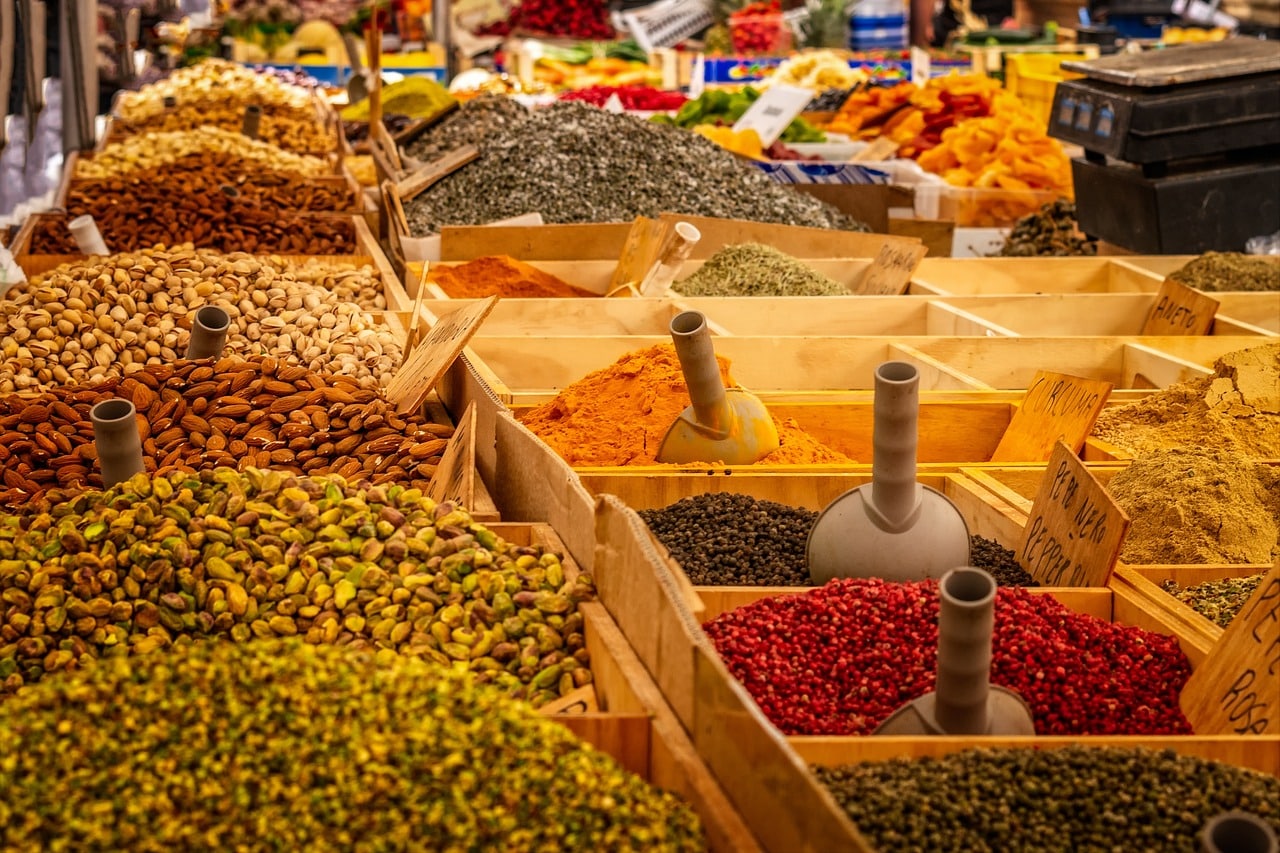Cooking with exotic spices

As you step into the world of culinary arts, the aroma of freshly ground spices, the vibrant colors, and the rich flavors can quickly captivate you. Cooking with exotic spices is not just about adding heat to your food, but it’s also about introducing an orchestra of flavors into your dishes. From the smoky chipotle pepper to the citrusy sumac, from the earthy cumin to the sweet notes of cinnamon, exotic spices can add depth, complexity, and personality to your dishes. Whether you’re cooking classic meat dishes or experimenting with vegan cuisine, spices can make all the difference. Let’s explore the world of spices and understand their impact on cooking.
Understanding Spices
Spices are aromatic or pungent vegetables substances used to flavor food. They are typically dried and can be used in different forms such as whole, ground, roasted, sautéed, fried, or as a topping. Spices come from various parts of plants like bark, roots, seeds, fruits, or flowers. Traditionally used in Indian, Middle Eastern, and Southeast Asian cuisines, they have gained popularity worldwide due to their profound impact on food flavors.
A découvrir également : The secrets of oven cooking
When used correctly, spices can transform a dish from ordinary to extraordinary. They can add heat, sweetness, tartness, bitterness, or a unique flavor to your dishes. However, understanding how to use them to their best potential requires knowledge and practice.
The Art of Blending Spices
Blending spices is an art that has been mastered by many cultures across the globe. It involves combining two or more spices to create a unique blend that enhances the flavor of dishes. The key lies in understanding the individual characteristics of each spice and how they can complement each other.
A lire également : Spanish tapas recipes for a friendly gathering
Indian cuisine, for instance, is renowned for its complex spice blends or ‘masalas’. These blends often include a mix of cumin, coriander, turmeric, and chili, among others. Similarly, Chinese five-spice powder is a blend of star anise, cloves, Chinese cinnamon, Sichuan (Chinese) pepper, and fennel seeds.
Blending spices not only enhances the flavor but also helps balance the ingredients. For instance, the heat of chili can be tempered with the sweetness of cinnamon or the sourness of amchoor (dried mango powder). It’s all about creating a harmony of flavors in your dish.
Spice Up Your Meat Dishes
Spices can take your meat dishes to a whole new level. They can add a depth of flavor, create a beautiful crust, and even tenderize the meat. Whether you’re grilling a steak, roasting a chicken, or slow-cooking a lamb shoulder, the right combination of spices can make all the difference.
A classic example is the traditional Moroccan spice blend ‘ras el hanout’ used in tagines and grilled meats. It’s a complex blend of over a dozen spices, including cumin, ginger, cinnamon, and turmeric. Similarly, ‘jerk seasoning’, a staple in Caribbean cuisine, is used to marinate chicken and pork. It features a blend of allspice, thyme, scotch bonnet peppers, and other spices.
Spices for Vegetarian and Vegan Cuisine
You might think that spices are only for meat dishes, but they can do wonders for vegetarian and vegan cuisine as well. They can transform a simple vegetable stir-fry or a tofu scramble into a flavorful and exciting dish.
Turmeric, for instance, is a staple in Indian vegetarian curries. It adds a warm, earthy flavor and a vibrant yellow color. Similarly, smoked paprika can add a hint of smokiness to grilled vegetables or vegan chili. Nutmeg and cinnamon can elevate sweet dishes like fruit crumbles and pumpkin pies.
Experimenting with Exotic Spices
Now that you understand the basics of spices, it’s time to experiment with them in your cooking. Don’t be afraid to try new spices or blend them in unconventional ways. This is where you can let your creativity shine and create your unique flavor profiles.
Start with small quantities and adjust according to your taste. Remember, it’s easier to add more spice than it is to take it away. Also, be mindful of the spice’s potency. Some spices like cloves and nutmeg are very potent and should be used sparingly.
Cooking with exotic spices can be an exciting and rewarding experience. It allows you to explore different cuisines, create flavorful dishes, and even improve your health. So, don’t wait any longer. Unlock the magic of spices and embark on a flavorful journey in your kitchen.
Discovering International Spice Blends
As your journey into the world of exotic spices continues, you’ll encounter an array of international spice blends that can add distinctive flavors to your dishes. These blends are the heart and soul of many cuisines, their unique combinations imparting an array of flavors that define regional dishes.
Middle Eastern cuisine offers a unique blend known as ‘garam masala’. Strikingly aromatic, this blend combines warming spices like cumin, coriander, cardamom, cloves, and cinnamon to impart a rich, warming flavor to dishes. It’s commonly used in curries, lentil dishes, and soups. On the other hand, ‘ras el hanout’, a North African blend, presents a mélange of over a dozen spices, including cumin, coriander, cinnamon, and chili peppers, adding depth and complexity to tagines and grilled meats.
Chinese ‘five-spice powder’ is a potent blend that includes star anise, cloves, Sichuan peppercorns, and fennel seeds. It is used to season everything from roasted duck to stir-fries. Similarly, ‘chaat masala,’ a popular Indian blend, combines spicy, tangy, and savory flavors, adding a zesty punch to street foods, salads, and snacks.
Exploring these diverse blends, along with individual spices like nigella seeds and juniper berries, can provide a new dimension to your cooking. They can transform a simple dish into something extraordinary with their intense, aromatic flavors.
Crafting Your Own Spice Blends
One of the most exciting parts of exploring the world of exotic spices is the freedom to create your own spice blends. The beauty of crafting your own blend is that it allows you to control the flavors and adjust them according to your preferences.
Begin with a base of flavorful spices like cumin, coriander, or turmeric. Then, add warmth with spices like cinnamon, star anise, or cloves. If you prefer heat, include chili peppers or Sichuan peppercorns. Aromatic spices like nigella seed or juniper berries can add an extra layer of fragrance.
Do remember that each spice has a different potency, so start with small quantities. Adjust the proportions as you go until you find a balance that pleases your palate. Whether you’re blending a fiery curry powder or a mellow garam masala, the key is to find a harmony of flavors that resonates with you.
Conclusion: Embark on a Spice Adventure
Cooking with exotic spices is an adventure in itself. It’s about exploring different cultures through their unique spice blends and incorporating those flavors into your cooking. Whether you’re spicing up a simple stir-fry or crafting a complex Indian curry, the right combination of spices can elevate your dishes, making them extraordinary.
Remember, it’s not just about adding heat to your food. It’s about introducing an orchestra of flavors, from the smoky undertones of chipotle to the sweet notes of cinnamon. It’s about creating a balance of flavors, a harmony that tantalizes the taste buds and leaves them craving for more.
So, don’t be timid. Experiment with spices, explore international blends, create your own mix, and let your culinary creativity shine. There’s a whole world of flavors waiting for you to discover. And as you embark on this flavorful journey, you’ll find that cooking with exotic spices is not just about food. It’s about creating experiences, making memories, and above all, savoring the joy of cooking.
